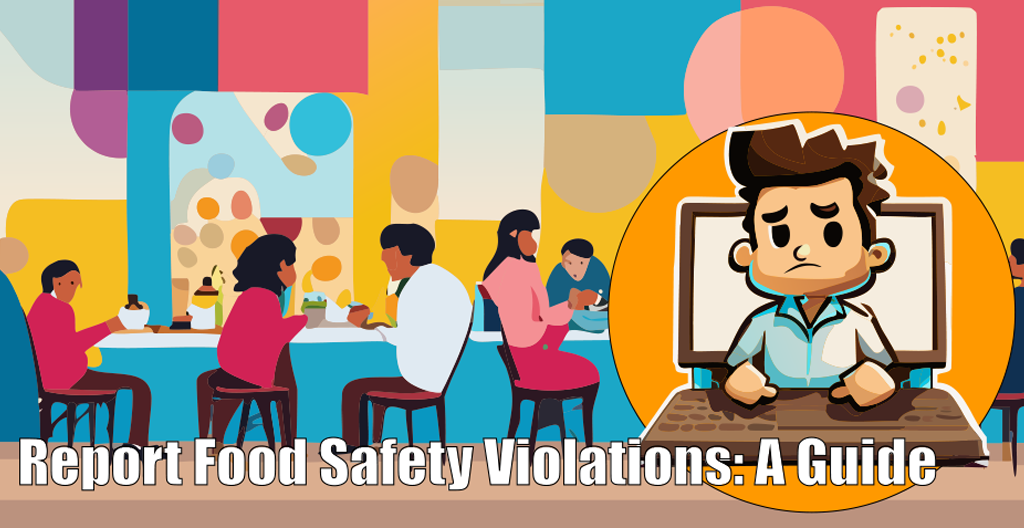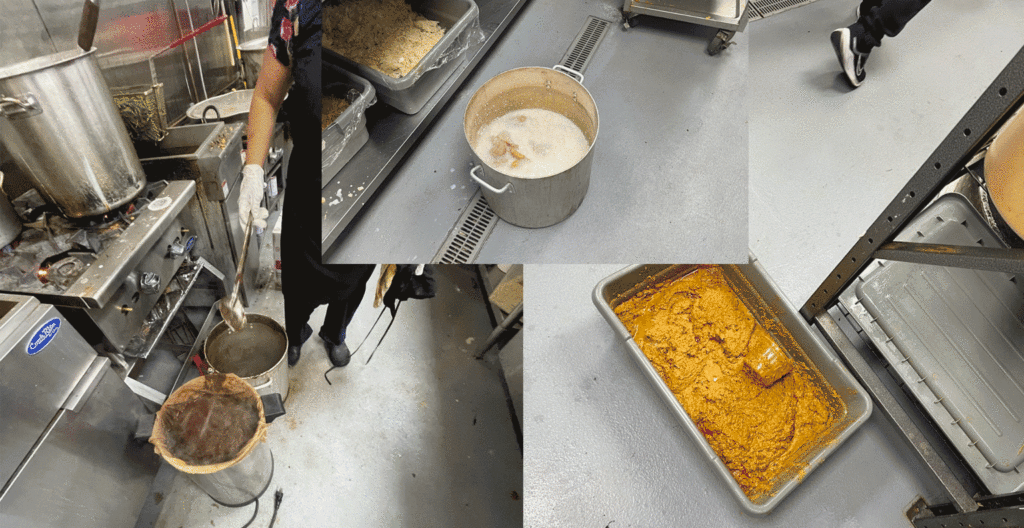
Report Food Safety Violations: A Guide
In the realm of culinary experiences, not every encounter is destined to be a delightful symphony of flavors and top-tier service. Sometimes, we stumble upon a discordant note, a disharmony in the supposed melody of dining. Perhaps you’ve encountered a case of ‘there’s a fly in my soup,’ or something far more sinister that threatens the very principles of food safety. Whatever your unsavory experience, there’s a way to tune the scales of food justice by reporting unsanitary conditions or unsafe practices at food establishments. This guide serves as your clarion call to action, a beacon for all those who wish to ensure that eateries adhere to the highest standards of food safety and hygiene.
Navigating the Bureaucratic Kitchen: Know Your Local Agencies
Each bite you take is protected by a complex network of food safety regulations enforced by various local and state health departments across the United States. Your first step in reporting a food safety concern involves identifying the correct local health authority. This is typically the health department in the county where the food establishment is located.
Since the United States is a vast tapestry of jurisdictions, there’s no one-size-fits-all approach. Most counties have a Department of Health website, which should be your first stop in the digital world. These websites often have dedicated sections for environmental health or food safety, and it’s here you’ll find the resources to report your concerns.
Precision in Your Complaint: Triggering a Full-Scale Inspection
It’s pivotal to understand the scope of a health inspector’s response to your complaint. Contrary to popular belief, an inspector swooping into a food establishment post-complaint doesn’t necessarily equate to a top-to-bottom examination of the premises. Inspectors operate with surgical precision: they zero in on the specific issue reported. For instance, if your complaint revolves around a suspicion of the establishment using unauthorized food additives like MSG (a perfectly legal additive, by the way, when used correctly), the inspector’s visit will focus primarily on this allegation. They might take a cursory glance at the establishment’s spice area, inquire about the use of food additives, and conclude their investigation, marking their findings in the inspection follow-up report.
What does this mean for you, the vigilant diner? Specificity is your greatest ally in filing a complaint. Vague or non-specific reports might not prompt the thorough investigation you envisaged. If your concern is about overall cleanliness or hygiene practices, it’s paramount to provide detailed observations to back it up. Did you notice residue on your plate, suggesting improper washing? Did your server handle money and then neglected to wash their hands before attending to food? These specifics can be the catalyst for a full-scale inspection, rather than a quick check.
In essence, the more precise your complaint, the more comprehensive the ensuing inspection is likely to be. It’s about triggering a domino effect: one well-placed, detailed complaint can set off a chain of scrutiny that spans far beyond the original concern. The more detailed your report, detailing potential violations, the deeper the health inspector will delve into the food establishment’s practices!
Here are a few generic complaints that could trigger a comprehensive inspection:
Honestly, my visit to [Restaurant Name] was alarming. I noticed staff lifting a box of raw chicken off the floor and then, without washing their hands, they went straight back to handling other food. From what I could see of the kitchen, cooks were actually prepping food right on the floor! The establishment’s upkeep is dubious, too — the restroom sinks were out of order. I mean, how are employees washing their hands after using the restroom? Plus, a lot of the dishes were chipped and given to us dirty. The last straw was when our server dropped our silverware on the floor and then attempted to hand it over to us as if nothing happened. We decided it was best to leave without eating
Would you believe that a restaurant in the United States actually allows staff to prep food on the floor? It seems implausible, right? Well, here’s a photo I took myself, in my capacity as a food safety consultant, showing staff in a Williamson County, Texas restaurant doing exactly that—prepping right on the floor!

Here is another example of a complaint:
I had dinner at [Restaurant Name], and it was downright disconcerting. I witnessed one of the kitchen staff sneeze directly into their hands and then, continue to handle food as if nothing had happened. Another employee cleared dirty dishes from a table and then immediately started handling food for another customer — no handwashing in sight. The restroom situation was a disaster, too! They were out of paper towels, and I noticed cooks exiting a stall still wearing their aprons. What’s more, the sauce tasted like it had been sitting out for hours, and the chicken was undercooked. Utterly unacceptable. We refrained from eating, fearing for our health. When we requested to speak with a manager, we were informed that no manager was on duty that day. It’s baffling! How can there be no manager on site to ensure things are running smoothly?!
Filing Your Report: The Digital Paper Trail
In today’s digital age, most county health departments offer online forms to report food safety violations. These forms are a godsend, allowing you to detail your grievances without the hassle of a Homeric odyssey to bureaucratic offices. Look for terms like “File a Complaint,” “Report a Violation,” or “Consumer Complaint Form.” Be as detailed as possible in your report, providing specific information about the nature of the violation, the establishment’s name and address, and the date and time of your experience. Remember, you’re the eyes and ears of the regulatory bodies; your detailed account can be instrumental in prompting inspections or investigations.
The Power of the Spoken Word: When to Make a Call
Not a fan of digital discourse? Some situations demand the immediacy of a phone call, especially if you’re reporting an issue that poses an immediate public health risk, such as foodborne illness outbreaks. Most county health departments provide hotlines or direct lines to their environmental health or food safety divisions. Don’t let the fear of being put on hold deter you; your call could prevent others from a nightmarish culinary encounter.
The Aftermath: What Happens Next?
After you’ve filed your report, the health department typically takes the baton from there. They may conduct inspections, review practices, or even initiate foodborne illness investigations based on your information. While they might not get back to you with epic tales of their regulatory conquests, rest assured that your voice plays a crucial role in the grand saga of food safety.
The Noble Art of Weaponizing Health Inspections
Now, let’s talk about a term that might sound a little aggressive: weaponizing. In the context of health inspections, however, it’s not only a force for good but also a necessary tool in the public’s arsenal. Some might argue that having food establishments operate in a constant state of ‘inspection paranoia’ is harsh. Yet, this very mindset shift could be the key to a universal adherence to health code rules.
Consider this: a restaurant that maintains high standards only because it’s worried about an impending health inspection is still a restaurant where you’re less likely to encounter unsafe practices. This ‘culture of fear’ is not about making life harder for these establishments. It’s about ensuring that they’re safe for everyone who walks through their doors. After all, they’re in the business of serving the public, and the public has a right to demand the safest experience possible.
Weaponizing health inspections means empowering the public. It means giving you, the diner, a voice and a channel to enforce accountability. It doesn’t mean frivolous complaints but leveraging this system for its intended purpose: safeguarding public health. By reporting legitimate concerns, patrons encourage a culture of consistent compliance, not just when an inspection is looming.
So, what if all restaurants worked with the awareness that a health inspector might walk in at any moment? What you’d have is a collective move towards impeccable standards. Fear, in this case, translates to thorough caution, meticulousness, and, ultimately, a safer dining environment for all. The result? A food industry that prioritizes health and safety as much as it does taste and presentation.
In this grand scheme of culinary safety, every stakeholder has a part to play. Restaurants need to keep their standards high, inspectors need to enforce regulations judiciously, and the public must remain vigilant. The fear of inspection becomes not a threat but a motivator for excellence, keeping everyone’s best interests in mind.
The Unsung Heroes of the Culinary World
By reporting unsanitary conditions, you’re not just a patron; you’re a protector of the public health, an unsung hero in the narrative of food safety. Your actions reinforce the standards that keep kitchens clean and practices safe, ensuring that every culinary experience can be a delectable one. In this vast dining domain that spans from the sizzling grills of Texas to the bustling bistros of New York, your vigilance helps pen a story that’s not just about good food, but safe food.
Take heart, dear diner, for your palate’s adventure is safeguarded by the power of your voice. Whether you’re faced with a gritty grill in Galveston or a dodgy diner in Denver, you possess the power to set things right. Bon appétit, and may your dining tales henceforth be only of delight!

Hey people!!!!!
Good mood and good luck to everyone!!!!!